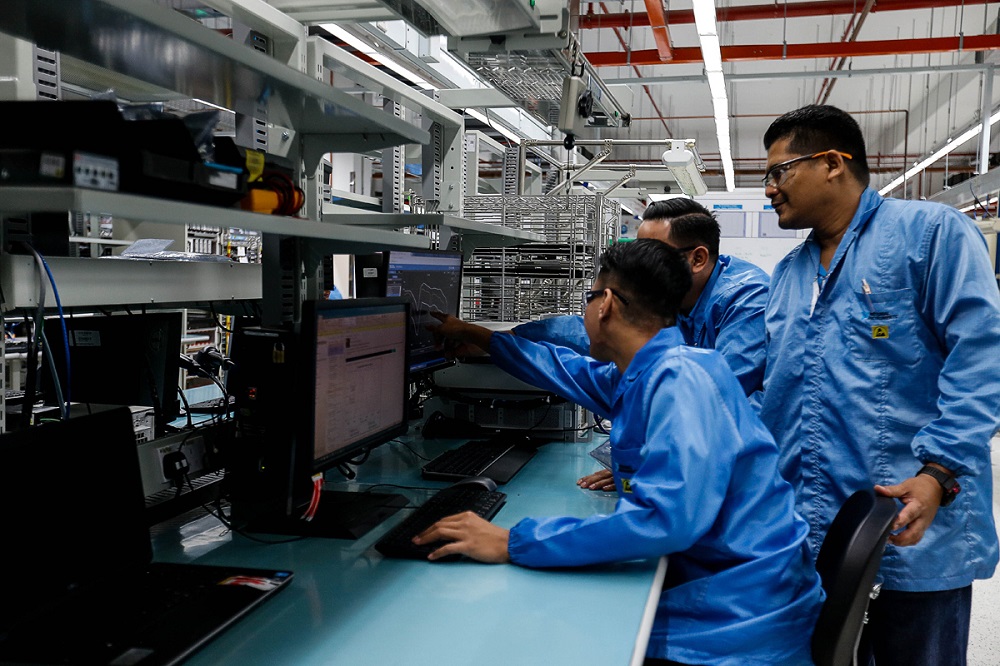KUALA LUMPUR, Dec 26 — The government will ensure economic development is not “geographically centred” by boosting economic activities at selected locations based on the strength and uniqueness of each area, said Economic Affairs Minister Datuk Seri Mohamed Azmin Ali.
In this regard, 15 key economic growth areas (KEGA) have been identified as new sources of growth, he said.
These comprise, among others, Islamic Finance Hub 2.0; Commodity Malaysia 2.0; smart and high-value farming; content industry, animation and digitalisation; as well as manufacturing, supply and services related to the Fourth Industrial Revolution, Azmin said in a statement today.
“To improve regional balance, a sum of RM1.1 billion has been set aside in Budget 2020 to boost regional economic corridor development, among others in Chuping Valley Industrial Area in Perlis (RM50 million), Kuantan Port in Pahang (RM69.5 million), Sungai Segget Centralised Sewerage Treatment Plant in Johor (RM42 million), Samalaju Industrial Park in Sarawak (RM55 million) and Sabah AgroIndustrial Precinct (RM20 million).
“Private investment will also be reinvigorated through more effective incentives, better coordinated promotional strategies and a more conducive business environment,” he said.
Starting January 1, 2020, the minimum monthly wage will rise to RM1,200 in 57 cities and municipalities across Malaysia. This, along with cash transfer programmes, income tax refund and lower cost of borrowings, also expected to provide additional impetus to household spending, he said.
Meanwhile, Azmin noted that the government had made available up to RM1 billion worth of customised packaged investment incentives annually over the next five years as a strategic push to attract targeted Fortune 500 companies and global unicorns in high technology sectors.
To qualify, these companies must invest at least RM5 billion each in Malaysia, which will generate additional economic activities, create 150,000 high quality jobs over the next five years and strengthen the country’s manufacturing and services ecosystems.
He said during the first nine months of 2019, significant levels of foreign and domestic investments were approved which amounted to RM149 billion.
Recognising the importance of infrastructure projects to facilitate supply chains and the mobility of goods and people, several strategic projects will be continued into the 12th Malaysia Plan such as the Pan-Borneo Highway, East Coast Rail Link, Bandar Malaysia and Gemas-Johor Baru Electrified Double Tracking project.
“Towards accelerating the digital economy and improving competitiveness, the government has successfully lowered broadband prices by 49 per cent and will implement the National Fiberisation and Connectivity Plan over the next five years,” he said.
Tax incentives will also be provided to further promote high value-added activities and increase productivity in transitioning into a 5G-enabled digital economy and Industry 4.0.
Moreover, a comprehensive incentive package for small and medium enterprises (SMEs) to increase their contribution to the economy and facilitate access to financing will be provided.
This includes an additional RM50 million allocation for My Co-Investment Fund administered by the Securities Commission to leverage digital financial innovation platforms to help finance underserved SMEs.
“The government will provide a 50 per cent matching grant of up to RM5,000 per company to adopt digitalisation for their business operation including the electronic point-of-sale systems, enterprise resource planning and electronic payroll systems.
“This matching grant will be worth RM500 million over five years, limited to the first 100,000 SMEs applying to upgrade their systems,” he added. — Bernama



















